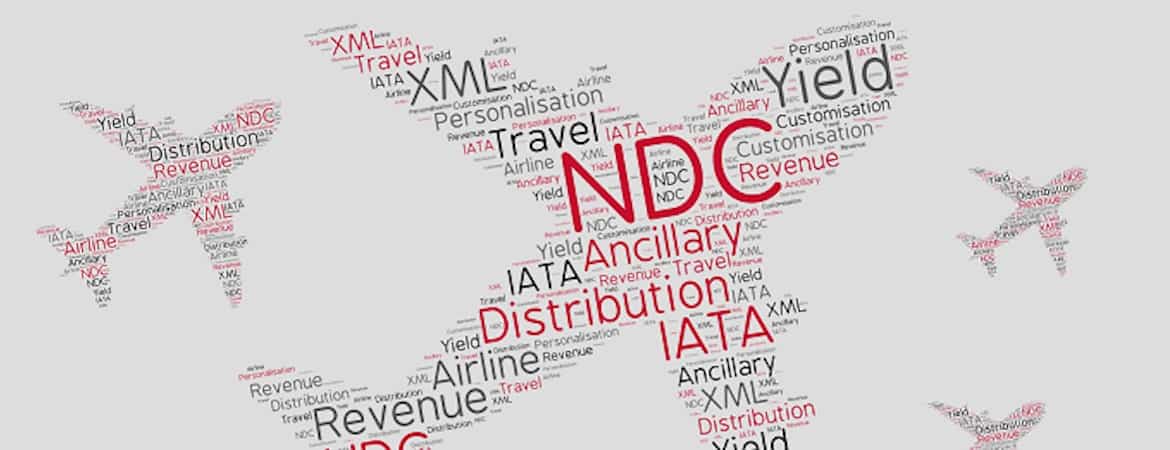“New Distribution Capability” (NDC) is an airline initiative to modernize the way airline tickets are sold on third party web sites. The effort has been somewhat controversial and has faced resistance by some who are opposed to such a large scale disruption of legacy distribution systems. AmTrav has been an outspoken proponent of NDC. This Op-Ed first appeared July 31, 2018 on The Company Dime.
It’s the summer of 2018 and we have finally reached a point where NDC is a “when” and not an “if.” Although hardly the norm yet, NDC APIs are being consumed in one form or another by GDSs, aggregators and a growing number of online travel agencies and travel management companies.
But let’s face it, for all the talk and promise, the most significant impact for NDC so far has been to simply shift around some of the economics for airlines, travel agencies, GDSs and ticket buyers. Although a quantum leap forward, NDC so far has done little to change how air travel is sold in indirect channels.
I know, I know ... “it’s still early.” But that’s exactly the problem. Six years into it and we are still calling it “early.” We’re gaining momentum, yes, but IATA’s goal for reaching mass adoption is not until 2025!
That’s not exactly a moonshot.
Meanwhile, our industry continues to peddle booking tools that don’t allow travelers to buy or airlines to sell the full menu of products available. Do we really think we can get away with the status quo for another seven years? How can we pick up the pace?
Since the beginning, the evolution of NDC has been about this or that meeting, or this or that schema version. But amid all that it seems like we’ve lost sight of the real objective. NDC stands for “New Distribution Capability,” not “New Distribution Standard.” Our customers are not concerned that we don’t have enough standards. They’re bothered that we don’t have enough capabilities. In fighting to get every airline to agree on schema structures, we’ve taken our eye off the real prize.
History shows us that innovation doesn’t begin with standards. Innovation comes when someone builds a new capability that maybe later will be so ubiquitous that some standardization will be helpful. In the early days of the PC, companies including Apple, Atari, Commodore and IBM put their best foot forward independently to create the best personal computers. Over time IBM won out and became a standard, but that standard emerged from spirited competition, not a bureaucratic process. Some like Apple never got on board. Do those of us with iPhones wish they had just fallen in line?
In obsessing about standards, we put the cart way before the horse. Standards, this early on, are suffocating. Almost by definition, they limit innovation to that which we can imagine today – and that which 290 carriers can agree on. For airlines trying to build new merchandising platforms, having to conform to standards sucks up energy that otherwise could be devoted to true innovation. Having to conform to standards inevitably lengthens time to market, especially when the standards keep changing.
My view from the cheap seats is that we need a little course correction. We need to double down on our commitment to enhancing distribution capabilities, but we need to pivot in our approach. Specifically:
- Let’s choose function and time-to-market over standards. If I’m consuming an airline API, I want one that lets me do things I can’t otherwise do; is fast and reliable; is easy for a developer to code to; and is available as soon as possible. It is much less important if it conforms to an industry standard. So I would urge airlines to use NDC schemas — or not — but focus foremost on dazzling us with functionality. Don’t waste time building heavy data translation layers if you can get it to market more quickly by using something closer to the schemas that your internal merchandising platforms are already using.
- Forget XML. Use JSON. It’s hard to take seriously a “new” standard that’s XML-based. For those who aren’t as nerdy as I am, going from Edifact to XML is like saying, “I’m going to upgrade my music library and switch from cassette tapes to CDs.”
- Don’t make it all or nothing. Perhaps most important, make it easy for TMCs to start with a hybrid approach. IATA is driving everyone to be “Level 3” certified, meaning that a transaction has to be managed end to end through NDC. While there’s nothing wrong with that, we all know there are a lot of hurdles to an airline delivering, GDSs integrating and TMCs consuming a full NDC transaction flow. So why not allow for an à la carte approach? Make shopping, pricing, booking, seats and servicing all independent and stateless (correct word?) Wouldn’t it be cool if you could shop through an NDC connection, price and book through a GDS, then go back to the NDC pipe for the extra leg room seats and later for a same-day flight change? Because traditional GDS PNRs generally can’t be touched through an NDC connection, and vice versa, there are lots of lost opportunities where an agency could otherwise be dipping their toe in the NDC water.
The airlines still have a lot of work to do to make NDC live up to its promise. But it’s not just the airlines. The travel agency community has to be part of the solution, too. Nowadays most TMCs purport to be backers of NDC but then they add a caveat: “As long as it doesn’t disrupt our existing workflow.” That’s not a reasonable position. If airlines and GDSs invest all this time and energy to deliver new capabilities, there won’t be a return on that investment if those capabilities are funneled through legacy desktops and booking tools. To do our part to make NDC a success, we TMCs have to invest our own time to make sure we pass on and actively promote all of these new capabilities to our customers. That will require us to upgrade our own house, too.
It’s been a long struggle to get the industry to agree that a new distribution capability is needed. I am grateful to those who have made it happen. Now it’s time for the rest of the airlines and intermediaries to roll up their sleeves, stop talking, and start doing. Let’s not worry if things get a little messy; that’s part of the process and we can clean it up later. We need to make tangible progress. Our customers have been surprisingly patient, but let’s not test that much further.

Jeff Klee




